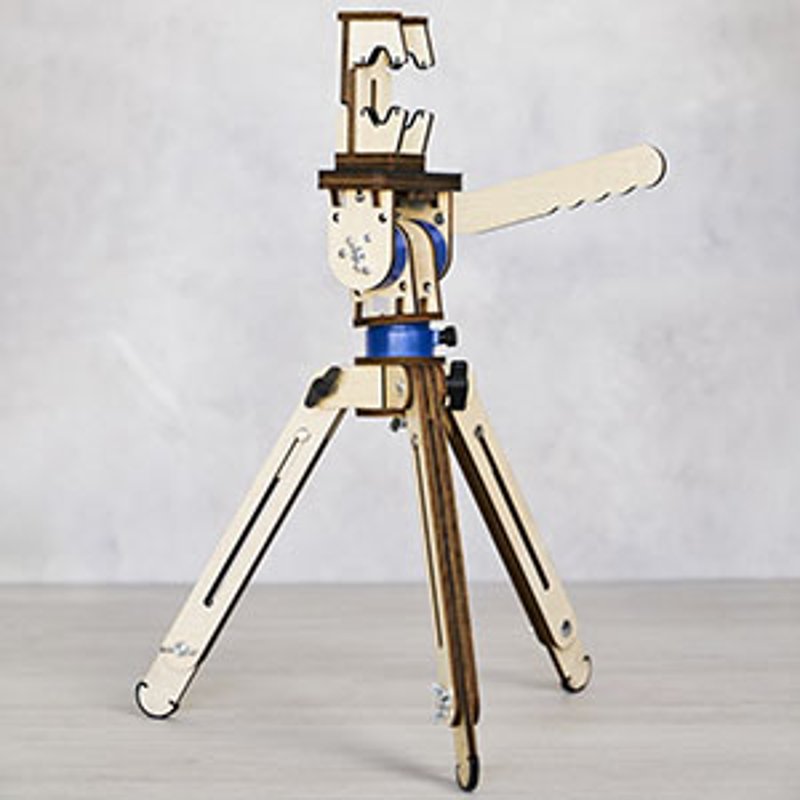Tabletop Tripod
In this crate, you'll explore the science, engineering, and history behind tripods while building one of your own!

Explore:
- Photography & Filming
- Daguerreotypes
- Capturing Light
Behind the design
Peek into the KiwiCo product design studio and the design process behind the Eureka Crate Tabletop Tripod.
- Our first tripod prototype wasn’t too focused on adjustability — we just wanted to make a tripod that could stand up. Even though this early design’s legs didn’t extend, they could pivot to balance the main platform, and that was a success for us! We knew the rest of the tripod (like the head, which is more of a neck here) would come together as we iterated.
Out-stand-ing Innovation
- With some more design work, we figured out how to make the legs telescope in and out, bringing the prototype in this photo to new heights. We also realized that our previous neck design shifted the tripod’s balance too far out to be stable, so we centralized the head with this locking cylinder. How would a camera fit on that cylinder? We weren’t sure yet, but we would be soon.
A Leg Up
- We based our next head prototype on fluid-head tripods, professional-level tripods that feature high-end swivel plates with fluid between them for smooth adjustability in all directions. With our simpler materials, though, we weren’t sure we could even build a fluid-head design — so we tested it with this proof-of-concept prototype! It ended up working great, even though we had to cut some corners like gluing the swivel plates on instead of using the final assembly method.
Getting Ahead With . . . a Head
- The prototypes above show a pretty straight path for development, but along the way we had lots of design features that didn’t make it to the final version. For example, this extending mount seemed like a fun way to expand the range of the tripod, and we actually made four different prototype versions of it. It never balanced quite right, though, so we had to pull back on that idea.
Over-extended Designs
